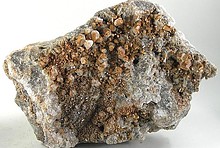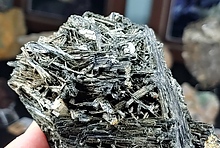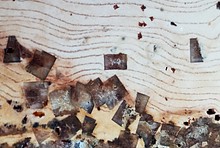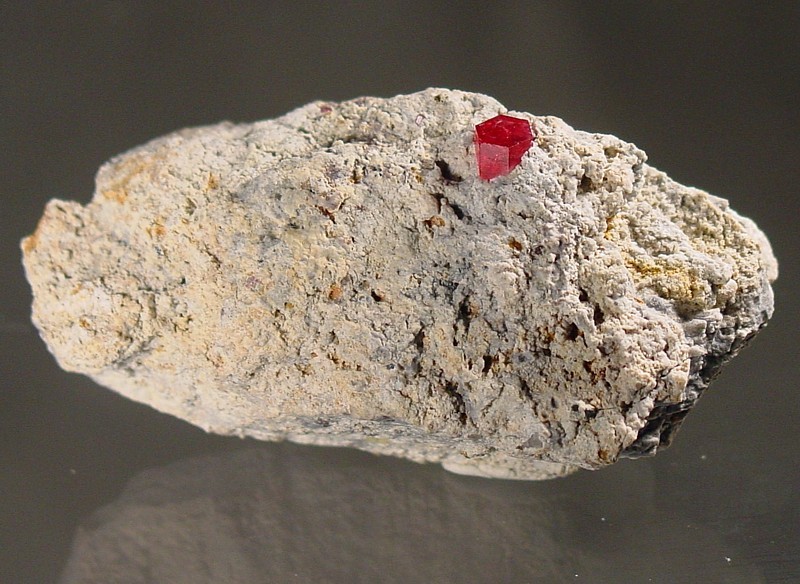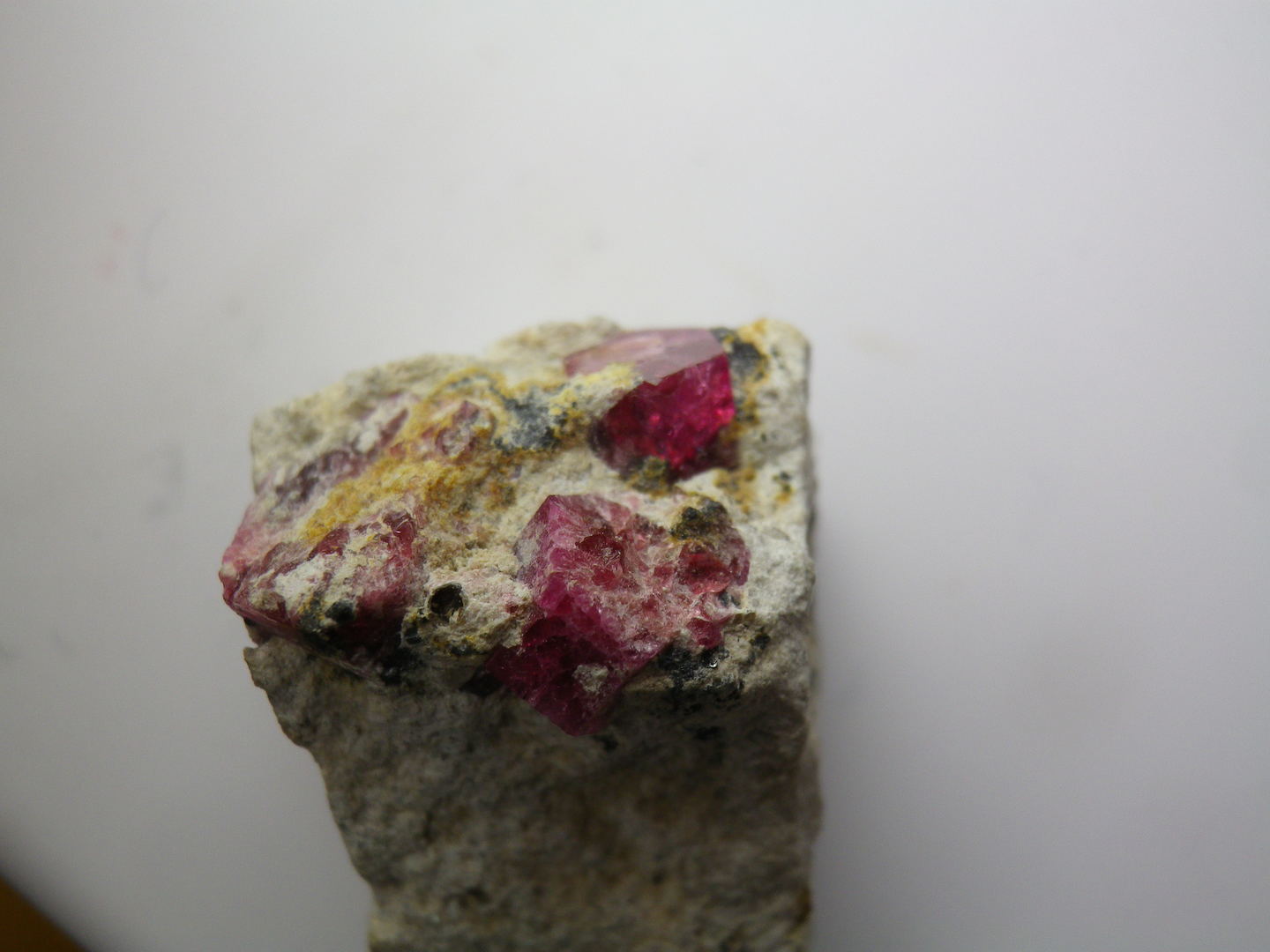Home PageAbout MindatThe Mindat ManualHistory of MindatCopyright StatusWho We AreContact UsAdvertise on Mindat
Donate to MindatCorporate SponsorshipSponsor a PageSponsored PagesMindat AdvertisersAdvertise on Mindat
Learning CenterWhat is a mineral?The most common minerals on earthInformation for EducatorsMindat ArticlesThe ElementsThe Rock H. Currier Digital LibraryGeologic Time
Minerals by PropertiesMinerals by ChemistryAdvanced Locality SearchRandom MineralRandom LocalitySearch by minIDLocalities Near MeSearch ArticlesSearch GlossaryMore Search Options
The Mindat ManualAdd a New PhotoRate PhotosLocality Edit ReportCoordinate Completion ReportAdd Glossary Item
Mining CompaniesStatisticsUsersMineral MuseumsClubs & OrganizationsMineral Shows & EventsThe Mindat DirectoryDevice SettingsThe Mineral Quiz
Photo SearchPhoto GalleriesSearch by ColorNew Photos TodayNew Photos YesterdayMembers' Photo GalleriesPast Photo of the Day GalleryPhotography
╳Discussions
💬 Home🔎 Search📅 LatestGroups
EducationOpen discussion area.Fakes & FraudsOpen discussion area.Field CollectingOpen discussion area.FossilsOpen discussion area.Gems and GemologyOpen discussion area.GeneralOpen discussion area.How to ContributeOpen discussion area.Identity HelpOpen discussion area.Improving Mindat.orgOpen discussion area.LocalitiesOpen discussion area.Lost and Stolen SpecimensOpen discussion area.MarketplaceOpen discussion area.MeteoritesOpen discussion area.Mindat ProductsOpen discussion area.Mineral ExchangesOpen discussion area.Mineral PhotographyOpen discussion area.Mineral ShowsOpen discussion area.Mineralogical ClassificationOpen discussion area.Mineralogy CourseOpen discussion area.MineralsOpen discussion area.Minerals and MuseumsOpen discussion area.PhotosOpen discussion area.Techniques for CollectorsOpen discussion area.The Rock H. Currier Digital LibraryOpen discussion area.UV MineralsOpen discussion area.Recent Images in Discussions
GeneralWhy isn’t Red Beryl more popular?

9th Dec 2018 17:24 UTCVicki Tremont

9th Dec 2018 17:33 UTCTed Hadley
So your question can be extended to, "Why isn't anyone marketing red beryl?"
My guess is it is so scarce there isn't enough money to be made from sales to account for marketing costs.
9th Dec 2018 18:06 UTCPaul Brandes 🌟 Manager
Simple answer: because there's not much of it out there to begin with...

9th Dec 2018 18:23 UTCNick Gilly

9th Dec 2018 18:30 UTCVicki Tremont
My question really stemmed from something else. So my friend is a crystal collector and also does some gem cutting as well. He has a 7 carat Red Beryl gem that he cut himself from a specimen that was stuck in the rock. I’ve seen the gem and it is beautiful... very large and the color changes depending on the light source from a deep red to a pinkish magenta. The color is evenly saturated and there are inclusions that look like cracks inside the stone which seem to be the norm, but it is very gemmy and transparent. At first glance it actually looks like a ruby.
The only information I knew about Red Beryl was from those same Internet articles I mentioned previously. Of course I had read about how Red Beryl is super rare and valuable and how most stones are under a carat. So when he showed me a 7 carat stone my jaw dropped and asked him why he doesn’t sell it if it’s so valuable and he said because it’s not a popular stone and he would have a hard time finding a buyer and wouldn’t know what to charge for it anyway. So it just got me thinking about why such a rare stone of significant size would be so hard to sell and then just why it wasn’t popular in the first place. I’m definitely no expert on the subject, but do you think he is right in saying what he said about it?
9th Dec 2018 19:24 UTCMark Heintzelman 🌟 Expert
Red Beryl is more of a novelty cut stone in my mind, as no stone of size could ever possess any significant quality. A jeweler named Ray Zajicek had worked with this material beginning in the 1980s, and presented the results of his accomplishments at the 2014 Tucson show, and his observations are as follows:
"Average faceted Red Beryl gem runs approximately 0.08 ct. A 0.50 ct sample would be large, and anything above a carat would be exceptionally rare. Like Emerald, Red beryl also has a range of hues and tones, as well as a typically uneven color distribution which makes it a real challenge to appropriately match already uncommon stones for any multi-stone piece. A carat-sized rough stone is not necessarily cuttable; yields are low, averaging between 8% and 15%. and the difficulty of mining the paucity of material available makes future production simply "cost-prohibitive". As it stands, few would spend money to promote a gem they probably would not be able to obtain in any quantity."
Beryl var. Red "gem clarity" (Violet Claims, Wah Wah Mountains, Utah)
9th Dec 2018 20:49 UTCFrank K. Mazdab 🌟 Manager
9th Dec 2018 21:09 UTCReiner Mielke Expert

9th Dec 2018 23:08 UTCVicki Tremont
-------------------------------------------------------
> Where is this red beryl your friend has from?
It’s from Utah. Is that the only place they are found?
9th Dec 2018 23:39 UTCPaul Brandes 🌟 Manager
They also come from Paramount Canyon and the Black Range Tin District, both in Sierra Co., New Mexico.

11th Dec 2018 16:53 UTCVicki Tremont

11th Dec 2018 17:49 UTCDoug Daniels

11th Dec 2018 18:00 UTCVicki Tremont

11th Dec 2018 19:57 UTCDaryl Babcock
I have close to 500 Red Beryl crystals from the Starvation Canyon claim in the Thomas Range, some gemmy but not true gems. The few I've seen from New Mexico are tiny and very flawed, worse than Thomas Range crystals.
Something else to consider is that it isn't true Red Beryl, it could be pezzottaite from Madigascar. They were trying to market that as Red Beryl for a while as well. If your friend got it from eBay it is likely either lab grown or pezzottaite.
As to why it isn't popular, there isn't enough of it to make it popular. While a tiny amount of Thomas Range Red Beryl is facetable out of my 500 I doubt I have 10 carats of quality gems and they are all tabular so none of them are of any real size for faceting. My understanding is that the Wildhorse Springs and WahWah are both basically played out (per John Holfert) so little more will come from them and they are the only sources of gem quality material of any size.
What is coming out of the Thomas Range now is good for mineral samples, especially if you get combination pieces with Bixbyite, Topaz, Hematite After Garnet or Pseudo-Brookite. Some are absolutely beautiful and amazing, but they are not facet quality gem material (with very few exceptions) and they are more valuable money-wise as a mineral sample than as a gem for mounting.

11th Dec 2018 20:24 UTCDoug Daniels
-------------------------------------------------------
> The one that my friend has is from Utah, not New
> Mexico.
Vicki - I knew that. I was responding to Paul's comment (guess I should have referenced that).
11th Dec 2018 20:31 UTCClifford Trebilcock
The crystals are not too large but some decent red color.
Cliff

11th Dec 2018 22:58 UTCAlfredo Petrov Manager

12th Dec 2018 03:59 UTCVicki Tremont
-------------------------------------------------------
> Russia is making red beryl in the lab now. If it
> is real red beryl and 7 carats it either is old
> stuff from the Ruby Violet claims in Utah or lab
> made. With you saying it is basically flawless
> I'd go with lab made, everything I've ever seen
> has had inclusions and/or flaws. In fact, like
> with Emerald (green beryl) flaws are a sign of
> natural crystal rather than lab grown.
> I have close to 500 Red Beryl crystals from the
> Starvation Canyon claim in the Thomas Range, some
> gemmy but not true gems. The few I've seen from
> New Mexico are tiny and very flawed, worse than
> Thomas Range crystals.
> Something else to consider is that it isn't true
> Red Beryl, it could be pezzottaite from
> Madigascar. They were trying to market that as
> Red Beryl for a while as well. If your friend got
> it from eBay it is likely either lab grown or
> pezzottaite.
I never said it was flawless or had no inclusions. I said that it was gemmy and an even color and saturation and it had inclusions that looked like cracks inside, but that seems to be normal as a flawless stone would be extremely rare. And he didn’t get it from eBay, he got it from a mineral show and it was indeed red beryl still stuck in the host rock.
I’ll see if I can get a picture of it.

12th Dec 2018 04:13 UTCVicki Tremont

12th Dec 2018 06:24 UTCWayne Corwin
Photo it on a piece of white paper.

12th Dec 2018 12:21 UTCVicki Tremont
14th Dec 2018 14:51 UTCUwe Kolitsch Manager
https://www.sciencedirect.com/science/article/abs/pii/S0022286017312796?
Fridrichová, J., Bačik, P., Ertl, A., Wildner, M., Dekan, J., Miglierini, M. (2018): Jahn-Teller distortion of Mn3+-occupied octahedra in red beryl from Utah indicated by optical spectroscopy. Journal of Molecular Structure 1152, 79-86.
Variety page updated.

14th Dec 2018 16:51 UTCVicki Tremont
By the way, what do you think of the stone? Does it seem to look like red beryl?
14th Dec 2018 18:29 UTCKevin Conroy Manager
15th Dec 2018 01:12 UTCIan Nicastro

15th Dec 2018 01:13 UTCDoug Daniels
15th Dec 2018 07:42 UTCKevin Hean
Once that is done have it Graded and Appraised. A Red Beryl of that size, colour and clarity will fetch a pretty penny.

15th Dec 2018 16:51 UTCEd Clopton 🌟 Expert

15th Dec 2018 16:55 UTCDonald B Peck Expert
If the stone is dark in all positions, turn it up on edge and rotate it. If it is beryl (which I think it is not) and it was cut with the c-axis vertical, the stone would remain dark through an entire rotation, up on edge tests whether that was the case. It is stays dark in a rotation on edge after having remained dark in a rotation about the axis of the stone, it is glass or perhaps garnet.

15th Dec 2018 18:47 UTCDoug Daniels

15th Dec 2018 23:25 UTCAlfredo Petrov Manager
16th Dec 2018 06:24 UTCGregg Little 🌟

16th Dec 2018 19:25 UTCDaryl Babcock
Good luck Vicki, I hope your beryl turns out to be real. Don't let us doubters shut down your search for the facts. I'm an amateur like you, but I've seen even the best of mineralogists misidentify minerals especially from a description and picture. And you might notice that Red Beryl is about as appreciated on Mindat as healing crystals. I suspect it has something to do with marketing scams like "Red Emerald" and "$10,000 a carat."

17th Dec 2018 03:57 UTCDoug Daniels
17th Dec 2018 16:29 UTCOwen Lewis
Just sitting quietly in a corner, bouncing my ball and chewing my gum....
You are absolutely right in that it is no possible to give a certain ID for a crystal that has been cut and polished without (at the least) running a few basic tests. However, for uncut crystals on matrix, just eyeballing is quite often enough to be strongly indicative. But, even then, if I'm going to sign off an opinion as stronger than 'it looks like', personally, I would still want at least to have had the piece in my hands and to examine it under good lights and (preferably) with a microscope.
Returning to red beryl. This should never be confused, even for a second, with morganite. It has a rich redness of a different quality to any of the other red crystals I have seen and it is just this that makes it so desirable. As others have said, it is most frequently too flawed to cut and polish a red beryl gem of any substantial size. Here's a couple of shots of one of mine, showing the heavy flawing but also (IMHO) capturing at least a glimpse of the wonderful red colour quality referred to.

17th Dec 2018 16:55 UTCDonald B Peck Expert

17th Dec 2018 17:31 UTCDoug Daniels

17th Dec 2018 19:43 UTCVicki Tremont
As far as the other comments, neither I nor my friend have a pic of the specimen in the matrix. He didn't take a pic before he cut the stone and he cut it a couple years ago. I did not see it prior to it being cut either. I am just going by what he said. Correct me if I am wrong, but if he bought it from a mineral show, don't the sellers legally have to tell you what the stone really is? I too am skeptical about the size but he swears up and down that it is a legit red beryl.
17th Dec 2018 21:22 UTCKevin Conroy Manager
I don't know about the legality of specimen identification, but if there is such a thing then there are a LOT of folks breaking the law! I think the vast majority of mislabellings aren't malicious. It's because the person doesn't really know what the piece is and they've made a guess, and/or are echoing what a previous label had.
On the other hand, odds are that there are folks out there who are mislabelling specimens for financial gain...

18th Dec 2018 03:40 UTCDoug Daniels
As for the things value (whatever stone it is), it's ultimately what someone is willing to pay for it. As far as a 7-carat red beryl from Utah, would most likely be of interest to collectors of one-of-a-kind stones. Depends on whether he advertises the beastie. And he can start the price negotiation; if his asking price is too high, he will soon find that out. "Ya pays yer money, ya takes yer chances". Or something like that. Might try gemdat.org, although I haven't done a lot of looking on that site.

21st Dec 2018 18:43 UTCNick Gilly
-------------------------------------------------------
> Hi Doug,
>
> Just sitting quietly in a corner, bouncing my ball
> and chewing my gum....
>
> You are absolutely right in that it is no possible
> to give a certain ID for a crystal that has been
> cut and polished without (at the least) running a
> few basic tests. However, for uncut crystals on
> matrix, just eyeballing is quite often enough to
> be strongly indicative. But, even then, if I'm
> going to sign off an opinion as stronger than 'it
> looks like', personally, I would still want at
> least to have had the piece in my hands and to
> examine it under good lights and (preferably) with
> a microscope.
>
> Returning to red beryl. This should never be
> confused, even for a second, with morganite. It
> has a rich redness of a different quality to any
> of the other red crystals I have seen and it is
> just this that makes it so desirable. As others
> have said, it is most frequently too flawed to cut
> and polish a red beryl gem of any substantial
> size. Here's a couple of shots of one of mine,
> showing the heavy flawing but also (IMHO)
> capturing at least a glimpse of the wonderful red
> colour quality referred to.
>
>
Very nice specimen Owen!
For comparison, here's my in-matrix specimen of red beryl, which is a thumbnail-size piece:

22nd Dec 2018 13:13 UTCRolf Luetcke Expert
It sure would have been nice to have seen the above red beryl in matrix, that pretty much would have told its origin.
Interesting read none the less.

4th Feb 2019 17:06 UTCMike Robertson
I'll post some pictures when I get a little free time.

4th Feb 2019 19:04 UTCMike Robertson
Sorry, Figured it out. :-)


4th Feb 2019 20:15 UTCWayne Corwin
What size are they besides 5.51ct? You have nothing for scale in your photos.

4th Feb 2019 20:52 UTCMike Robertson
9.0 x 8.42 x 8.33
Depth to lowest point
6.1mm
Aprox. depth to center 6.65mm

5th Feb 2019 19:35 UTCDaryl Babcock
Tabular and raspberry almost always means Thomas Range, but they almost always have sand inclusions. I can see where the matrix was, did you remove it or was it already removed when you collected/purchased it? Size is about right for Thomas Range as well, though I've only seen a few pictures of the Wildhorse stuff (as well as John Holfert's descriptions).
Was this self-collected or purchased? Do you know where and when it was collected?
It is a very nice beryl!

8th Feb 2019 22:21 UTCMike Robertson





Mindat.org is an outreach project of the Hudson Institute of Mineralogy, a 501(c)(3) not-for-profit organization.
Copyright © mindat.org and the Hudson Institute of Mineralogy 1993-2024, except where stated. Most political location boundaries are © OpenStreetMap contributors. Mindat.org relies on the contributions of thousands of members and supporters. Founded in 2000 by Jolyon Ralph.
Privacy Policy - Terms & Conditions - Contact Us / DMCA issues - Report a bug/vulnerability Current server date and time: April 16, 2024 04:06:32
Copyright © mindat.org and the Hudson Institute of Mineralogy 1993-2024, except where stated. Most political location boundaries are © OpenStreetMap contributors. Mindat.org relies on the contributions of thousands of members and supporters. Founded in 2000 by Jolyon Ralph.
Privacy Policy - Terms & Conditions - Contact Us / DMCA issues - Report a bug/vulnerability Current server date and time: April 16, 2024 04:06:32

